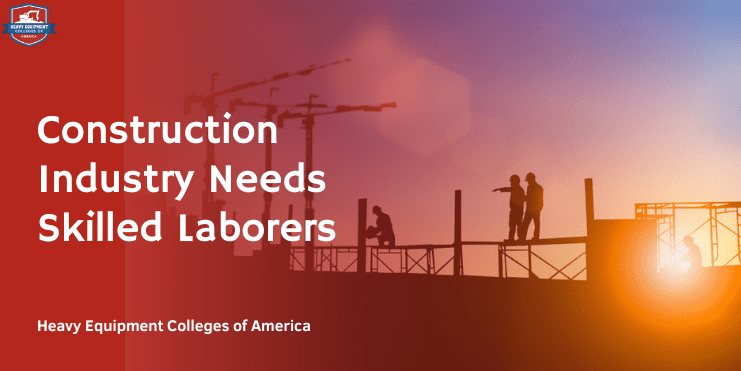The construction industry is vital to infrastructure. Yet, without skilled laborers, most of the projects couldn’t be completed nor can heavy equipment be operated properly. Unfortunately, that’s the situation the construction industry is facing. There are several ways companies can help resolve the growing shortage. Read on to learn more.
Table of Contents
Construction Industry Faced Huge Worker Shortage in 2022
According to the Associated Builders and Contractors (ABC), the construction industry has a significant shortage of skilled laborers—650,000 to be exact. That figure doesn’t include the normal pace of hiring needed to meet demand.
Impact On Projects
With fewer skilled workers to operate heavy equipment, you can bet there will be significant project delays. Not just anyone can move materials with something as big as a crane or as small as a forklift. It takes training, education, practice, and certifications to do so safely and efficiently.
When projects are not done on time, costs can rise and delays can spill into other areas. If a new bridge or road can’t be built, commuters will feel the impact.
What Some Surveys Are Saying?
In a combined survey between Associated General Contractors of America (AGC) and Auto Desk, they found that 93% of construction contractors have reported having open positions ready to be filled. Surely that’s a positive sign. However, 91% of the surveyed companies also reported difficulty filling some of the positions that do the majority of on-site construction duties. The survey also revealed that a common issue is that 77% of these companies can’t find laborers who possess the skills or cannot pass a drug test.
How Construction Can Attract Workers in Today's Labor Shortage
1. Invest in Training Opportunities
There are plenty of able-bodied workers out there who just need the right training and skills to work construction jobs. So why not offer training opportunities? Employers should work with newcomers to help them develop their skills—it’s a win-win situation.
Employers have plenty of options for training unskilled workers. Hands-on training let’s new employees gain practical experience as they learn the ropes of working on a construction site.
Virtual reality or simulated training gives new employees a chance to practice in a safe environment. This way, they can put their newly acquired skills to the test without putting lives or company equipment at risk.
Mentoring and leadership programs can help new employees set up goals for themselves and help them transition into larger roles when ready.
2. Review Compensation and Benefits Strategies
Money talks. Potential employees are looking for competitive wages and excellent benefits. If possible, employers can offer sign-on bonuses or raises to help attract new employees. If that’s not enough or possible, employers should take a look at a comprehensive benefits package that could include disability, life insurance, and retirement.
3. Provide Autonomy
Work autonomy means giving employees the freedom to work in a way that suits them. As such, employees get to decide how and when their work should be done. This type of workplace flexibility can go a long way with workers as the construction industry is generally very rigid and comes with high levels of problem-solving.
Skills That Are Needed To Be a Worker in the Construction Industry
You’re probably asking yourself, “What skills do I need to work in construction?” Here are just some of the things employers are looking for:
- Physical strength and stamina
- Manual dexterity and coordination
- Strong reading and math comprehension
- Building and mechanical knowledge
- Excellent vision and depth perception
Don’t be discouraged if you don’t currently have some of these skills. You can find a training program that can help you develop these skills and expand your knowledge—putting you ahead of the curve.
How The Biden’s Infrastructure Plan Can Help
Back in June 2022, the Biden-Harris administration launched a talent pipeline challenge to fill high-quality jobs to rebuild America’s infrastructure and supply chain. In conjunction with the Federal government’s investments in the workforce, the President’s administration is asking employers, training providers, educators, and more to come together and make real commitments to supporting an equitable workforce. The sectors are being targeted with this plan—Broadband, Construction, and Electrification as it relates to electric vehicle charging infrastructure and battery manufacturing.
Start Your Career in the Growing Heavy Equipment Industry
What is a labor shortage to employers could be a great opportunity for you. Are you ready to answer the call? First, you’ll need to develop the right skills, training, and experience that employers want. You can accomplish this through a training program at HEC.
Whether you want to work with cranes or want general knowledge on how to operate basic heavy equipment, we’ve got you covered. Most of our programs can be completed in as little as three weeks, with an exception of the Tower Crane Program, which can be completed in as little as two. Once you graduate from HEC, you can take advantage of our career services, like mock interviews and resume building, and help you navigate job boards.

